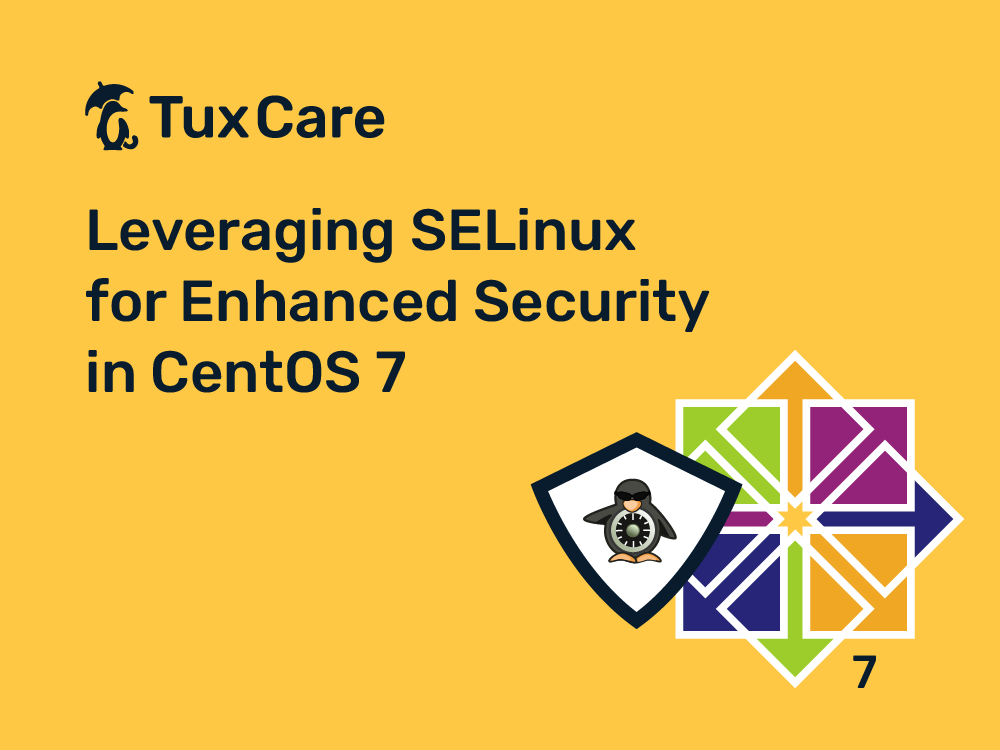Leveraging SELinux for Enhanced Security in CentOS 7
For organizations that rely on Linux-based systems, especially the popular CentOS 7 distribution, effective security management is a critical concern. To bolster security in CentOS 7, system administrators often leverage SELinux, an intrinsic and powerful security mechanism. This post will detail how using SELinux can enhance your overall system security while adhering to the need for necessary security updates in CentOS 7 and accommodating crucial security patches.
Introducing SELinux: A Pillar of Security in CentOS 7
SELinux, or Security-Enhanced Linux, is a Linux kernel security module that provides a mechanism for supporting access control security policies. Introduced to help with the mitigation of potential system vulnerabilities, it offers granular control over system processes and their interactions with other components. This granular control, when appropriately implemented, provides a robust layer of defense against malicious software and targeted attacks.
Despite its evident benefits, SELinux is often misunderstood and incorrectly configured, or even disabled by system administrators. However, with a better understanding of its functionalities and configuration settings, you can take full advantage of SELinux and significantly bolster security in CentOS 7.
Why SELinux Matters: Role in Security Updates and Patches
Keeping your system updated with the latest security updates in CentOS 7 is crucial to maintaining a secure infrastructure. Security updates often provide fixes for known vulnerabilities that could otherwise be exploited by malicious actors. However, despite regular updates, there can still be periods of vulnerability between the discovery of a security flaw and the release of a patch to fix it. This is where SELinux comes in.
SELinux serves as a proactive defense mechanism that can mitigate potential damage during these periods. It operates on the principle of “least privilege,” allowing only necessary system interactions while denying everything else by default. Therefore, even if a malicious actor or malware manages to infiltrate your system, SELinux limits the extent of their actions, thus providing an additional layer of protection alongside regular security updates and patches.
SELinux in Practice: Examples and Interactions with CentOS 7 Infrastructure
SELinux provides three modes of operation: Enforcing, Permissive, and Disabled. In a CentOS 7 environment, it is recommended to keep SELinux in ‘Enforcing’ mode for maximum security. However, setting SELinux policies can be a complex task due to its verbose policy language.
A practical tool to streamline this process is the `semanage` command, which simplifies policy management. For instance, if you wanted to allow an HTTPD server to send email on your CentOS 7 system, you would use the command `semanage boolean -m –on httpd_can_sendmail`. This action modifies the SELinux policy to allow the specified interaction between the HTTPD server and the email system.
Moreover, to ensure your system is up to date with the latest security patches in CentOS 7, tools like `yum` (or `dnf` in more recent distributions) can be used. Regular updates can be automated using the `yum-cron` tool, ensuring your system remains patched with minimal administrative overhead.
SELinux and these update tools together form a comprehensive security setup, where SELinux offers proactive protection and the update tools ensure the system is patched against known vulnerabilities.
The Value of Leveraging SELinux for Security
In conclusion, SELinux is an invaluable tool for enhancing security. While the importance of regular security updates in CentOS 7 cannot be overstated, SELinux provides an additional layer of defense that keeps your system secure, even in the face of unknown vulnerabilities.
Leveraging SELinux effectively does require an investment of time and effort in understanding its intricacies and best practices. However, the security benefits it brings to your CentOS system make this investment worthwhile. So, rather than disabling SELinux, consider diving deeper into its capabilities, refining your policies, and incorporating it as an integral part of your security strategy.
For more comprehensive insights into Linux system security and management, you can refer to this comprehensive guide on SELinux by Red Hat. Furthermore, for an overview of how to effectively manage system security and updates, check out our previous post on [managing security patches in CentOS]
Invest time in understanding SELinux, and you will surely leverage the most secure, efficient, and reliable functionalities it provides for CentOS 7. Remember, a system is only as secure as its weakest link, and SELinux helps ensure there are fewer weak links to exploit.



 Documentation
Documentation Login
Login




